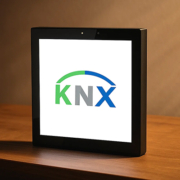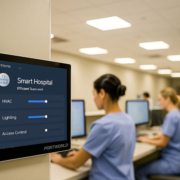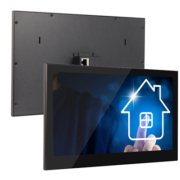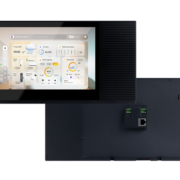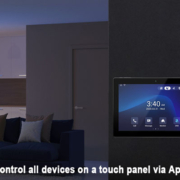Smart Home Products & Devices: The Ultimate Guide to a Connected Lifestyle with Portworld
The rise of smart home products & devices is transforming the way we live, work, and interact with our surroundings. From voice-controlled lighting to intelligent security systems, the smart home ecosystem has expanded beyond basic convenience to deliver energy efficiency, enhanced security, and personalized automation.
As consumers seek integrated and seamless solutions, having the right combination of devices—and a trusted partner to support them—is crucial. That’s where Portworld, a global leader in smart home control systems and embedded touchscreen solutions, steps in to redefine how smart homes function.
In this guide, we explore the key categories of smart home devices, how to integrate them effectively, and how Portworld empowers OEMs, system integrators, and smart home brands with customizable and scalable technology.
Key Categories of Smart Home Products & Devices
1. Smart Control Panels
The command center of any connected home, smart control panels consolidate control of lighting, HVAC, security, and entertainment into one intuitive interface.
- Wall-mounted touchscreen panels (4-inch & 5-inch by Portworld)
- Android-based control tablets
- PoE-enabled embedded control panels
Portworld offers customizable smart control panels compatible with Android, Linux, and Windows OS, ideal for seamless home automation.
2. Smart Lighting Systems
Smart bulbs, dimmers, and LED strips can be automated based on time, motion, or scenes.
- Integrates with Portworld’s wall control panels
- Supports remote and voice control (Alexa, Google Assistant)
3. Smart Climate Control
Control temperature and air quality with:
- Smart thermostats
- IoT-enabled air purifiers
- HVAC control modules
Portworld’s panels offer direct climate control integration and can be used in residential or commercial HVAC automation scenarios.
4. Smart Security Devices
Protect your home with:
- Smart door locks
- IP surveillance cameras
- Motion sensors
- Video doorbells
Portworld panels support integration with access control systems, surveillance monitoring, and real-time alerts for enhanced home security.
5. Smart Entertainment Systems
From voice-controlled TVs to multi-room audio, entertainment has become smarter.
- Integrated through Portworld’s Android-based touch panels
- Control speakers, projectors, and home cinemas from one screen
6. Smart Appliances
Refrigerators, washing machines, ovens, and even coffee makers now come with smart connectivity.
- Interconnected via Zigbee, Wi-Fi, or Z-Wave
- Control from centralized Portworld control panels or mobile apps
Why Portworld Stands Out in the Smart Home Industry
Customized Smart Solutions for Global Clients
Founded in 2008, Portworld (Sunworld Technology Co., Ltd) has over 17 years of experience in designing and manufacturing smart home control devices. Their strength lies in delivering tailor-made solutions for brands and integrators.
Comprehensive Hardware & Software Integration
- Rockchip, MTK, Intel, AMD, Snapdragon-based systems
- Support for Android, Linux (Ubuntu/Debian), Windows
- Full BSP/SDK development, C#/Python/Java support
OEM/ODM Flexibility
From PCB layout to UI customization, Portworld offers:
- Custom PCBA designs
- Industrial-grade embedded systems
- Branding and interface personalization
Product Examples from Portworld
- 4-inch and 5-inch smart wall control panels for apartments and hotels
- 10.1-inch PoE tablets for smart building management
- Rugged industrial touch panels for commercial use
How to Build a Connected Smart Home System
Step 1: Define Your Needs
Start with the core functions—security, comfort, energy-saving—and choose devices accordingly.
Step 2: Select an Ecosystem
Ensure all your smart home products are compatible—Portworld offers flexible protocol support including Zigbee, Wi-Fi, Bluetooth, RS485, and CAN Bus.
Step 3: Install a Central Hub
Use Portworld’s touchscreen control panel to serve as the main hub that connects and manages all smart home products & devices.
Step 4: Automate Scenarios
Create automation scenes (e.g., “Good Morning”, “Movie Mode”, “Away”) for better lifestyle integration.
Future of Smart Home Products & Devices
Smart home technology is evolving rapidly. Key trends include:
- AI-driven automation: Personalized behavior prediction
- Voice-first interfaces: Natural language processing and command learning
- Interoperability: Integration across ecosystems like Matter, Apple HomeKit, and Tuya
- Energy analytics: Real-time consumption monitoring via control panels
Portworld is already ahead of these trends by offering highly customizable smart control panels that adapt to both today’s needs and tomorrow’s innovations.

